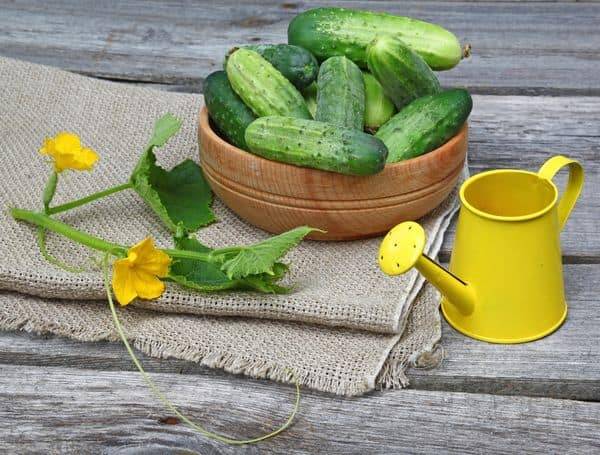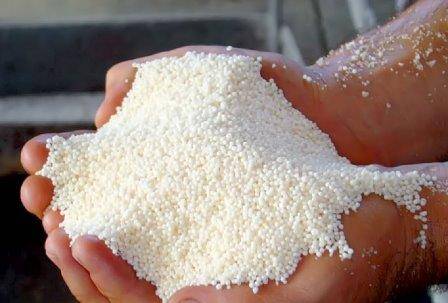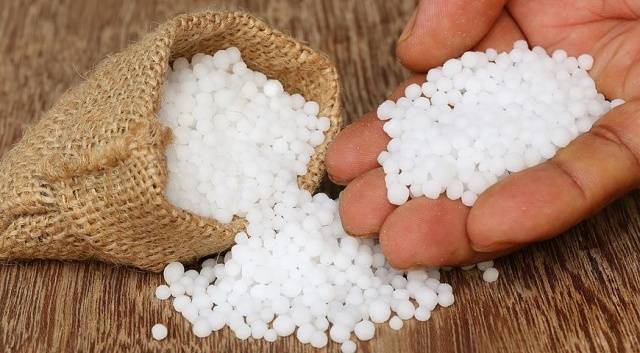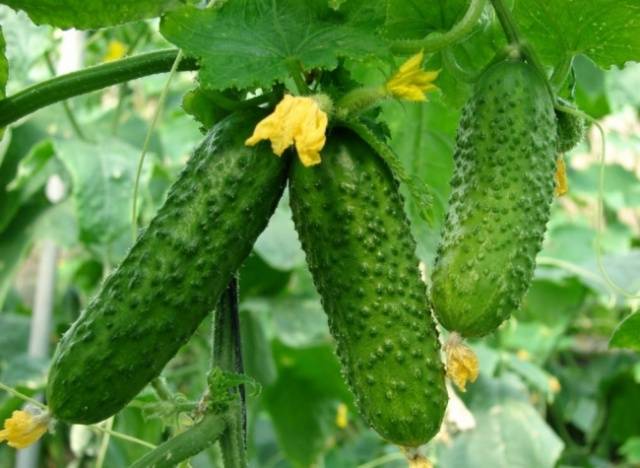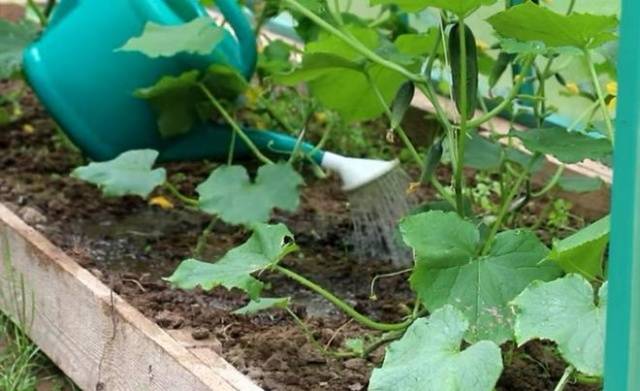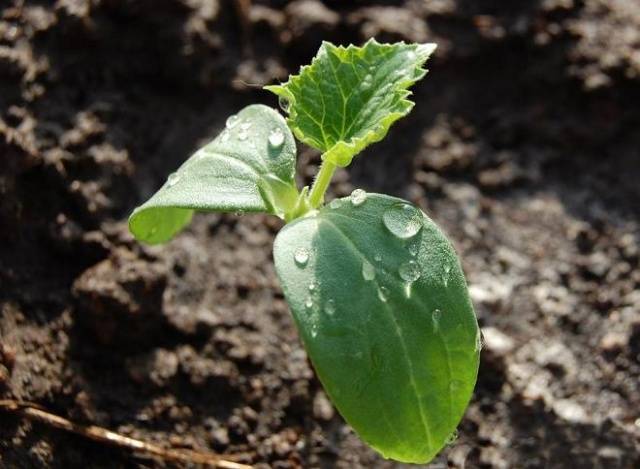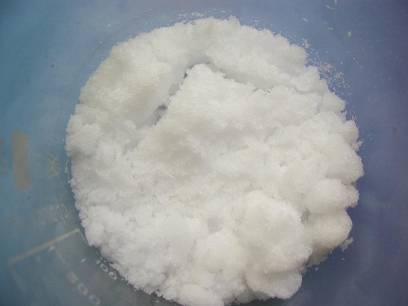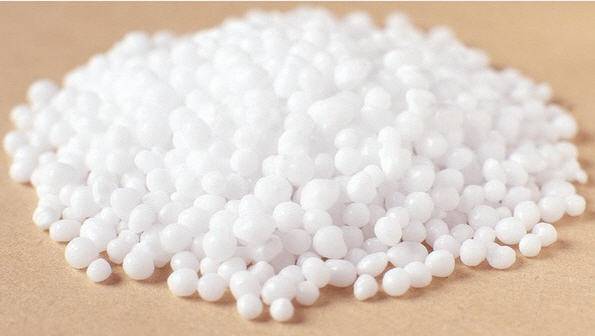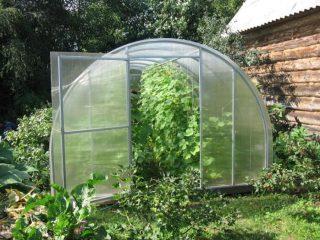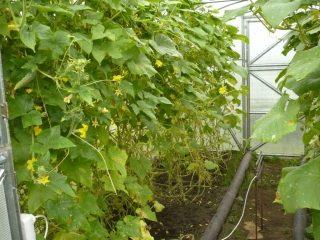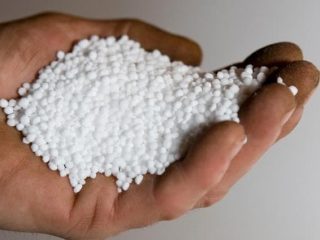Content
Nitrate is very often used by gardeners as a feed for vegetable crops. It is also used to fertilize flowers and fruit trees. Calcium nitrate is excellent for feeding cucumbers. But as with the use of other mineral fertilizers, you need to figure out how to properly apply this fertilizer. In this article we will see what is special about calcium nitrate, and how you can use it to grow an excellent crop of cucumbers.
Composition of saltpeter
Calcium nitrate consists of 19% calcium and 14–16% nitrogen in nitrate form. In other words, it is called calcium nitrate. We are used to seeing this nitrate-containing fertilizer in the form of white crystals or granules. Calcium nitrate dissolves quickly in water. Even with long-term storage it does not lose its beneficial properties. To extend shelf life, the fertilizer must be kept in airtight packaging.
Fertilizers containing nitrogen tend to increase soil acidity. In this regard, calcium nitrate stands out favorably. Unlike urea, it does not affect the acidity level of the soil in any way. This fertilizer can be used on all types of soil. It manifests itself most effectively in sod-podzolic soil.Despite the fact that calcium nitrate contains nitrates, if the rules of use are followed, it does not affect the body in any way. Such fertilizer can increase the yield and quality of cucumbers.
Properties of saltpeter
It is worth recognizing that not all gardeners use calcium nitrate as a top dressing on their site. The fact is that calcium is not a vital mineral for growing vegetables. The main element of nitrate is nitrogen, which has a positive effect on the growth and fruiting of vegetable crops. But without calcium, nitrogen will not be fully absorbed by the plant. So without each other, these minerals are not as useful.
Calcium nitrate is a real godsend for soil with a high level of acidity. Calcium nitrate is able to absorb excess amounts of iron and manganese from the soil, as well as metals that increase acidity. Thanks to this, the plants come to life, and the entire growing season is very fruitful. Calcium contained in nitrate is necessary for the development of the root system. This element is responsible for feeding the plant with necessary substances.
It is necessary to fertilize plants with fertilizers that contain calcium nitrate in the spring. It is dug up along with the soil while preparing the garden for planting. It is not recommended to apply this fertilizer in the fall, since melted snow will simply wash away all the nitrogen it contains. And the remaining calcium without it becomes harmful to cultivated plants.
Today, 2 types of nitrate are produced:
- granular;
- crystalline.
Crystalline nitrate has a high level of hygroscopicity, which is why it can quickly be washed out from the soil. Therefore, the granular type is more popular, as it absorbs less moisture and does not form dust when applied to the soil.
The importance of feeding cucumbers
Some gardeners do not use fertilizers when growing cucumbers. As a result, the harvest is poor, and the cucumbers grow small and clumsy. Using mineral fertilizers you can get the following results:
- Stimulation of growth and strengthening of the root system.
- Increased immunity, resistance to diseases.
- Resistance to changes in weather conditions.
- Fertilizers affect the formation and strengthening of cell membranes.
- Improving metabolic processes.
- Stimulate and accelerate germination.
- The process of photosynthesis and the absorption of carbohydrates improves.
- Increase in yield by 15%. The taste of the finished product is improved, and the fruits are stored much longer.
Use of saltpeter
Calcium nitrate is added to strengthen the root system and speed up the growth process plants. It is suitable for any soil. It can be applied in either liquid or dry form. Some gardeners use this fertilizer during drip irrigation of beds.
Root feeding with calcium nitrate is carried out as follows:
- To feed berry crops you will need 50 grams of nitrate per 20 liters of water. During the season, such fertilizer is applied only 1 or 2 times;
- for tomatoes, cucumbers, onions, potatoes and other vegetable crops, you need to dilute 25 grams of fertilizer in 11–15 liters of liquid;
- To feed fruit trees with calcium nitrate, mix 25 grams of nitrate and no more than 10 liters of water.It is necessary to water the trees with this solution before the buds open.
To perform foliar feeding or spraying with calcium nitrate solution, you need to mix 25 grams of fertilizer with 1 or 1.5 liters of water. To irrigate cucumbers you will need about 1.5 liters of solution per 10 square meters.
Spraying fertilizer on the leaves in this way will help get rid of blossom end rot, which often appears on tomato bushes. Can also be used as a disease prevention. Fertilizers using calcium nitrate are a real salvation in areas with arid climates. This fertilizer is very useful for vegetable and grain crops. Nitrate is one of the affordable fertilizers. And if you compare its cost with the results of use, it will be justified several times over.
Fertilizing cucumbers with saltpeter
Most often, saltpeter is used in small households, since it is not very convenient to transport. To fertilize a large field you will need a huge amount of calcium nitrate, but for home garden beds you can purchase small 1 kg bags. This feeding helps plants absorb nutrients from the soil and also increases resistance to various diseases. Thanks to saltpeter, you can grow strong and tasty cucumbers.
Calcium nitrate must be applied immediately before sowing cucumbers. This fertilizer will promote rapid seed germination. It is the presence of nitrogen that makes this fertilizer so beneficial for cucumbers. At the beginning of growth, this element is simply necessary for plants.Further, fertilizer can be applied throughout the growing season as needed. In this case, the solution is sprayed throughout the plant.
Using calcium nitrate for feeding cucumbers, you can achieve the following results:
- the green mass will form quickly and efficiently. Such rapid growth occurs due to the active process of photosynthesis. Nitrate also helps to form sprouts at the cellular level, participating in strengthening the walls of plants;
- Fertilizing the soil in spring before sowing helps activate enzymes in the soil. Thanks to this, the seeds will quickly sprout and begin to grow;
- saltpeter has a good effect on the root system of plants. It helps cucumbers develop immunity to diseases and various fungi;
- such feeding makes plants resistant to changes in temperature and weather conditions;
- saltpeter improves the taste of cucumbers and also increases the amount of harvest. Cucumbers last much longer.
Foliar feeding of cucumbers calcium nitrate are carried out every 10 days. The first feeding is done immediately after the appearance of 3 or more leaves on the plants. Stop feeding cucumbers only after the fruiting period begins. To prepare fertilizer based on calcium nitrate, you need to mix:
- 5 liters of water;
- 10 grams of calcium nitrate.
Calcium nitrate is stirred until completely dissolved and immediately begin spraying the cucumbers. This kind of feeding will prevent the appearance of rot on the roots. Also, the use of saltpeter serves as excellent protection against slugs and ticks.
Making calcium nitrate yourself
Gardeners know that calcium nitrate is not as widespread as ammonium nitrate.Therefore, some people prepare it themselves at home. To do this, you will need to prepare the following components and accessories:
- Ammonium nitrate.
- Slaked lime.
- Bricks.
- Aluminum pan.
- Firewood.
You will also need a respirator for respiratory protection and gloves. You should not prepare the mixture close to the house, as the process will release an unpleasant odor. So, first you need to build a structure for the fire from bricks. The bricks should be placed at such a distance that the prepared pan will fit there. Next, pour 0.5 liters of water into the container and add about 300 g of saltpeter. Now put the prepared mixture on the fire and wait until it starts to boil. Then lime must be gradually added to the solution. For this number of components you will need about 140 grams of slaked lime. You need to add it in very small portions so that the entire process of adding lime takes 25 minutes.
The mixture continues to be cooked until it completely gets rid of the pungent unpleasant odor. Now the fire is extinguished, and the mixture is left to settle until a lime deposit appears at the bottom of the container. After this, the upper part of the mixture is drained, and the formed precipitate can be discarded. This solution is calcium nitrate.
Ammonium nitrate
Ammonium nitrate is currently considered one of the cheapest fertilizers. Many gardeners and gardeners simply scatter it over their plots even before the snow melts. Of course, this fertilizer is a source of necessary for cucumbers nitrogen, but at the same time you should be careful when using it as a feed.
You cannot spray cucumbers with ammonium nitrate solution. This substance can burn the sprouts, causing the entire crop to die. In order not to harm the plants, fertilizer is applied to the soil to a depth of about 10 cm using a shovel or rake. It is often added while digging the soil. Thus, nitrogen enters the soil, but will not burn the root system and leaves of the cucumbers.
You can also use ammonium nitrate to water cucumbers. Thus, the soil is enriched with nitrogen without harming the green mass. Such fertilizing should be carried out very rarely, especially after the start of fruiting and in the autumn.
Storage conditions and contraindications
Contact with such flammable materials may cause the fertilizer to catch fire. It is also not recommended to use organic substances at the same time. Under no circumstances should calcium nitrate be added together with superphosphate or manure. Remember that excessive amounts of nitrate can cause the accumulation of nitrates in vegetables and other crops. You should be especially careful when feeding cucumbers, zucchini and pumpkin with ammonium nitrate. These vegetables are more capable of absorbing nitrates than any other.
Fertilizer must be stored in plastic or paper bags. Remember that this is an explosive substance and should not be placed near flammable materials. Choose a cool place to store saltpeter. Direct sunlight should not come into contact with the fertilizer. Excessive heating of nitrate may cause an explosion.
Conclusion
As we have seen, saltpeter is a source of nitrogen, essential for cucumbers, which has a positive effect on plant growth and productivity. This type of fertilizing should be applied with great care, since it is a nitrate product. A few weeks before harvest, the application of saltpeter must be stopped. By following the rules outlined above, you can get an excellent harvest of cucumbers.
